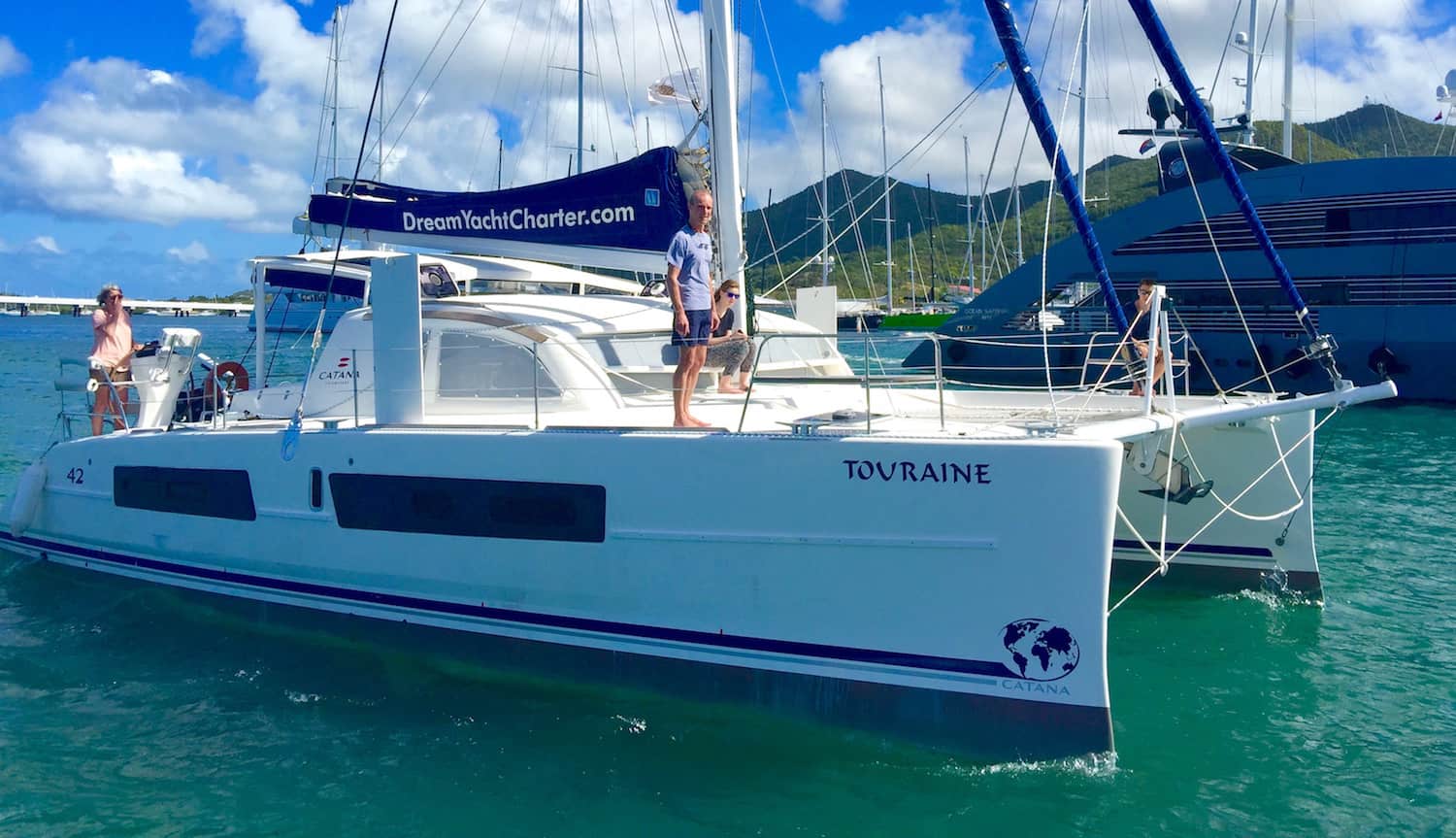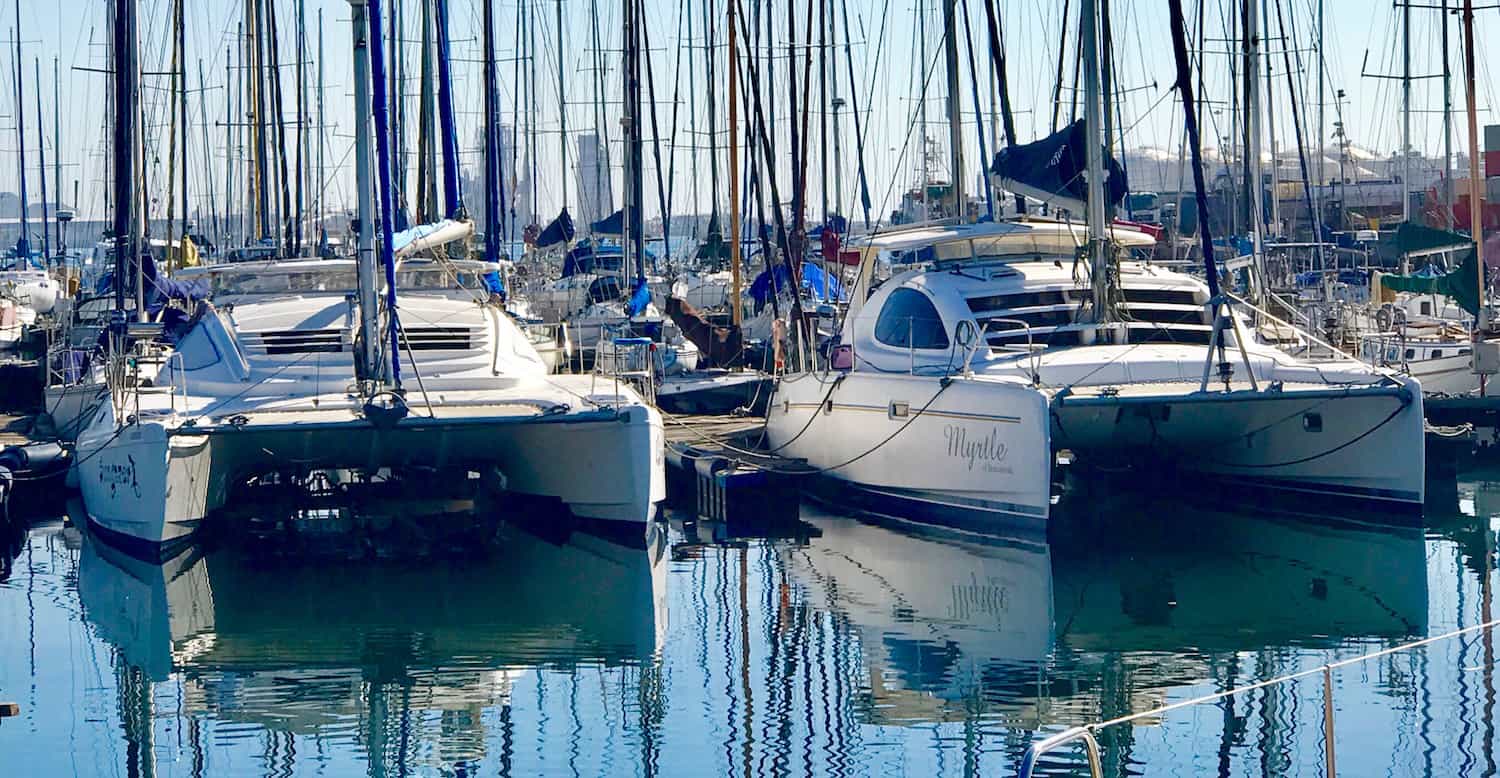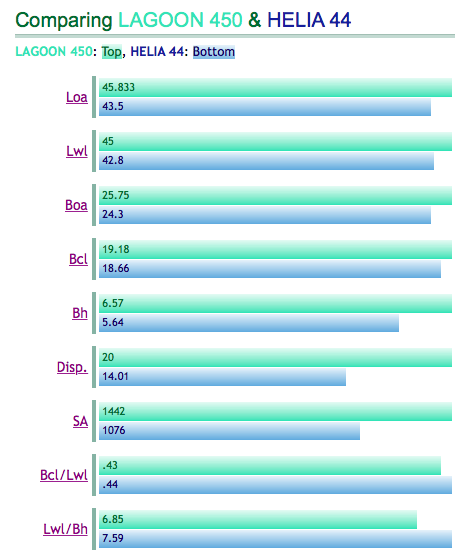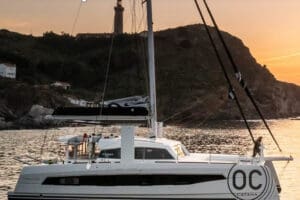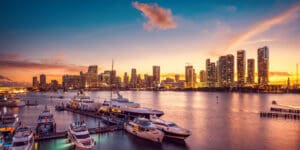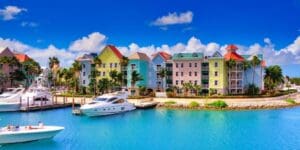Which Cruising Catamaran Performs Better…And Does It Really Matter?
A client recently alerted us to a YouTube video posted by a catamaran dealer that is blatantly misleading and inaccurate. If you listen to this dealer, every catamaran manufacturer, other than the Fountaine Pajot brand, is slow, unsafe, not seaworthy and not fit to be a cruising catamaran.
While we agree that the Fountaine Pajot brand is an excellent product (we sell a lot of them), it certainly is not the ONLY good cruising catamaran in the world. There are many products available that are as good and like so many things, when it comes to choosing a cruising boat, it often boils down to personal preference, especially in this category of cruising catamaran.
2022 UPDATE: You will still find some great information below regarding cruising catamarans, especially if you are in the market to buy one. But lots has happened in the Performance Cruising Catamarans category since this post was written a few years ago, like Catana is back in the game with tons of innovation and a fresh new look. In addition to reading this article, be sure to read:
Cruising Catamarans Performance
The dealer in the video our client mentioned to us specifically focused on the superior performance of the Fountaine Pajot compared to some of the competing brands in the cruising category like Leopard Catamarans, Nautitech Catamarans, Bali Catamarans, Lagoon Catamarans, and Catana Catamarans.
The fact is that there is very little difference in speed between similarly lengthed cats in this category. All these catamarans are displacement hulls and they pretty much sail to hull speed with intermittent surfing. Therefore, when sailed efficiently, these cats should have very similar performance.
We hear terms such as power-to-weight ratio (sail area to displacement) bandied about a lot by yacht salespeople of the various boat brands as an indicator of performance. While this is definitely a factor and certainly has an effect on acceleration and light wind performance, it is not the only factor. Some catamaran brands will be faster around the cans in a regatta while others will be better when making long passages.
What one should also consider is that when cruising is that a catamaran’s performance will be dictated by sea state as well as wind speed and direction. In light winds, there will probably be a screecher or asymmetrical spinnaker deployed and in strong winds the sails will probably be reefed. This means that in cruising mode, most sail plans are optimized to the conditions. Therefore, when evaluating a cruising catamaran’s performance, there are many factors to be taken into consideration. This is not a simple cut-and-dried argument.
Catamaran Performance Factors & Calculations
To display the different factors and calculations which are relevant when it comes to catamaran performance, we went to Multihull Dynamics for data and pulled some numbers on the two boats most mentioned in this dealer’s video, namely Lagoon and Fountaine Pajot. Here is what we found on the Multihull Dynamics site:
- Bruce Number – This is a power to weight ratio for relative speed potential for comparing boats. It takes into consideration the displacement and
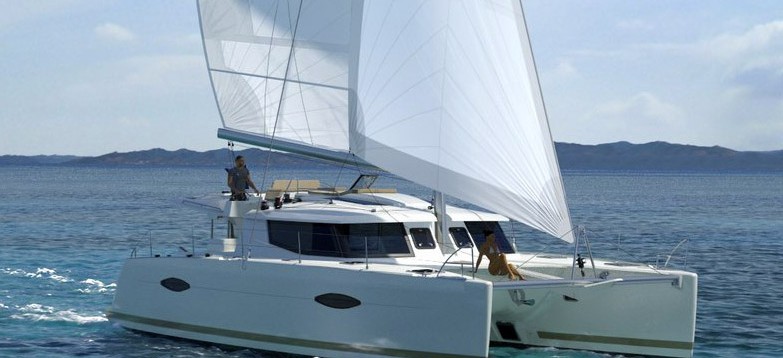 sail area of main and jib (100% fore triangle only) no overlapping sails. Here the lagoon 450 was better with 1.07 versus 1.04 for the Fountaine Pajot Helia 44
sail area of main and jib (100% fore triangle only) no overlapping sails. Here the lagoon 450 was better with 1.07 versus 1.04 for the Fountaine Pajot Helia 44 - Base Speed – An empirically derived indicator of the speed a given boat could average over a 24-hour period (best days run) under a variety of conditions. Here again the Lagoon had better numbers with 9.82 knots versus 9.46 knots for the FP Helia 44 – this explains why the Lagoons are so successful on the long Ocean races like the ARC
- KSP – Kelsail Sailing Performance number is a measure of relative speed potential of a boat. It takes into consideration Sail area, Displacement and length at Waterline. The higher the number the higher the speed predicted for the boat. Here the FP Helia 44 at 6.06 had better numbers than the Lagoon 450 which comes in at 6.02 – the Helia is the lighter boat.
- TR – Texel Rating provides a handicap system for widely varying boats sailing together in a race. The formula is essentially the inverse of the Base Speed formula with constants applied to make the results useful. The Texel rating system permits the calculation of time to sail a given distance. Thus a boat with a higher TR can be expected to take longer from start to finish than a boat with a lower TR. The Lagoon 450 came in at 141 versus the FP Helia 44 at 144.
- Interestingly the Leopard 45 came in with better numbers than the Lagoon and the FP as follows: Bruce number – 1.25; Base Speed 10.65; KSP 7.68 and TR 122.
- The numbers for Antares PDQ44 are very similar to the Helia 44 and Lagoon 450.
- Unfortunately there was no data available for the Bali or current Nautitech designs.
*Disclaimer: All data quoted here was derived from Multihull Dynamics. Catamaran Guru offers the details in good faith and does not guarantee or warrant this data.
>>Click on the pictures above or go to Multihull Dynamics website for a full explanation of the graphs.
The take-away from this exercise is that all these boats are essentially very similar cruisers with very similar performance characteristics, to the degree that it is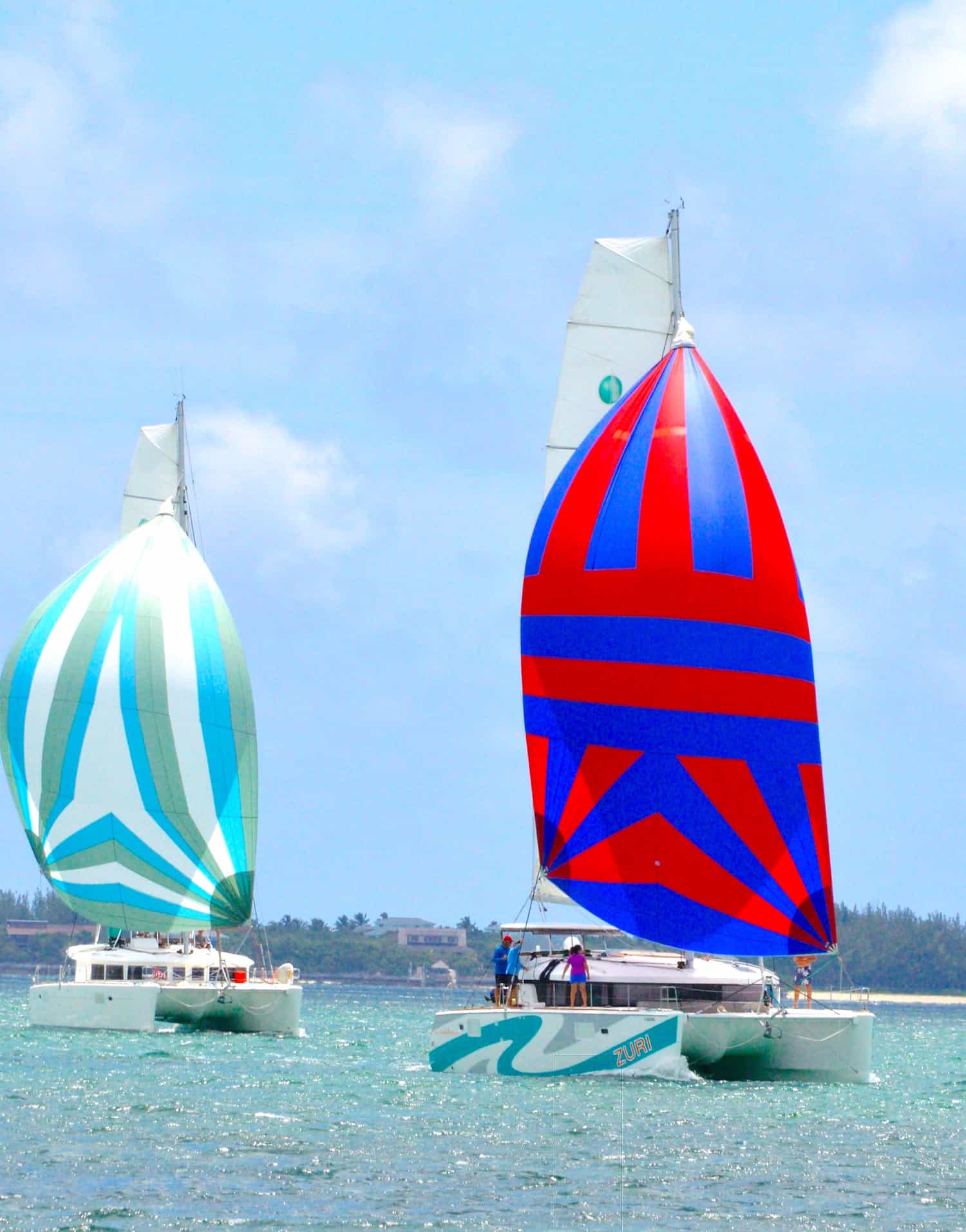 rendered almost irrelevant and should definitely not be an overriding factor when choosing a boat in this category. When choosing a cruising catamaran, there are also a lot of other factors that should be considered such as quality, comfort, livability, equipment, safety, resale value, etc.
rendered almost irrelevant and should definitely not be an overriding factor when choosing a boat in this category. When choosing a cruising catamaran, there are also a lot of other factors that should be considered such as quality, comfort, livability, equipment, safety, resale value, etc.
While the Fountaine Pajot dealer touts the superior performance of their brand, actual data shows that the Lagoon brand has won more ARC cruising rallies than any other brand of cruising catamaran. These are hardly the statistics of “just a charter catamaran that sails in 50-mile circles and lacks performance”, as is claimed by this dealer. As an example, check out these ARC and ARC+ rally results in which Lagoon consistently features well:
- 2016 Official Results in the ARC + Trans-Atlantic
- Spirit, Lagoon 450 Flybridge – 1st Multihull
- Cat’Leya, Lagoon 52 Sportop – 2nd Multihull
- Sea to Sky, Lagoon 450 – 3rd Multihull
- Dreamcatcher, Lagoon 52 – 4th Multihull
- Sumore, Lagoon 570 – 5th Multihull
- Opptur, Lagoon 500 – 6th Multihull
- Lea, Lagoon 52 – 10th Multihull
- 2015: 380 Havhunden, first in ARC+ Multihulls Division in corrected time
- 2013: 620 Enigma, first in ARC+ Multihulls Division in corrected time
- 2012: 560 Feliz, first in ARC Multihulls Division in real time
- 2011: 560 Blue Ocean, first in ARC Multihulls Division in corrected time & third in ARC Multihulls Division in real time
- 2010: 620 Lady Boubou, first in ARC Multihulls Division & 11th overall in real time
This is NOT an indication of how good or bad one boat over another is, but rather an indication of dealer bias! We are sure this debate will continue but it is our considered opinion that one should look at the overall boat and not be blinded by issues that might or might not be manufactured by over-zealous sales people. As we have said before, it often comes down to personal preference.
Performance Cruising Catamarans
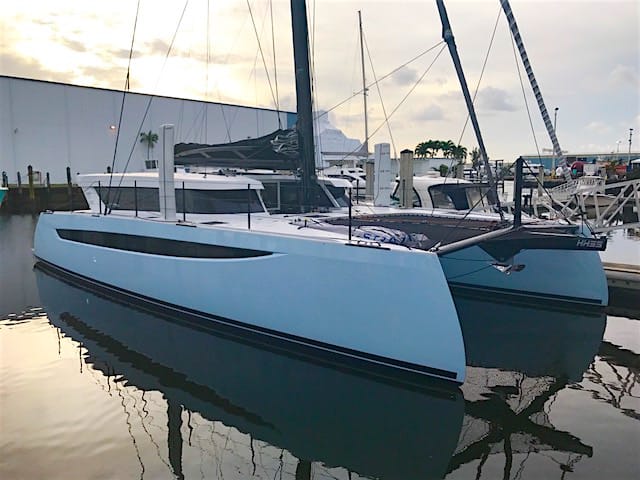 As veteran sailors know, sailing upwind with a cruising catamaran without daggerboards is hard to do because the boat makes a lot of leeway. Performance-oriented catamarans, however can easily achieve this since they are a different breed altogether and can indeed sail at breakneck speeds, point upwind, sail in a whisper of a breeze and tack on a dime. Catamarans in the performance category are Outremer, Catana, HH Catamarans, Gunboat, and Tag Yachts to name but a few. Read all about them in this article by David Schmidt of Sail Magazine by David Schmidt of Sail Magazine.
As veteran sailors know, sailing upwind with a cruising catamaran without daggerboards is hard to do because the boat makes a lot of leeway. Performance-oriented catamarans, however can easily achieve this since they are a different breed altogether and can indeed sail at breakneck speeds, point upwind, sail in a whisper of a breeze and tack on a dime. Catamarans in the performance category are Outremer, Catana, HH Catamarans, Gunboat, and Tag Yachts to name but a few. Read all about them in this article by David Schmidt of Sail Magazine by David Schmidt of Sail Magazine.
High-performance cruising cats are becoming more popular and there are a lot more on the market than even just five years ago, but it’s not for everyone, especially if you are not a skilled sailor. Daggerboards and bigger rigs require more skill and are not for the average sailor.
We’ve been racing on and off for years on different catamarans and we’ve always had great fun sailing and surfing at speeds of 15+ knots. But as fun as that is, it can be a white knuckled, wild ride in bad conditions and can leave the crew tired and tense because one has to really pay attention. At these speeds any mistake could be catastrophic since there is so much load on the rig. So, make no mistake, sailing fast in less than good conditions is hard work, particularly when you sail shorthanded.
When only the two of us cruise along on our own boat, we really appreciate the pleasure of gliding through the water at 8-10 knots, relaxed and comfortable. Would we love to be able to coast along at a good clip in very light winds? Sure, we would love to own an Outremer or Catana! But that type of performance cat will cost us probably twice the price of a regular cruising catamaran. Is it worth the money for the average cruiser? Debatable.
With the advancement of technology, more people will eventually be able to sail these performance cats skillfully and will be able to afford them as costs come down but until such time, we believe that the average sailor can very happily sail at fair speed toward their destination, safely and relaxed on an average cruising catamaran as discussed above. The fact is, one or two knots of speed, which is what the difference between these cruising cats MIGHT be, will not make or break your passage.
2020 Update: At the time of writing this article, we owned a Lagoon 450 SporTop, not a rocket ship by any means, but a fair sailing boat. We now own a Bali 5.4 catamaran that is significantly lighter and faster in general as a cruising catamaran and we love the extra speed. However, I have to say that this boat is less comfortable underway than the heavier Lagoon. It is more buoyant, a little more skittish and tend to surf much quicker. So one has to pay more attention in more vigorous conditions. It can be tiring on a long passage, but it sure is fun!
Stephen says, “I personally like the Bali because it is a more lively boat and sails very well – when we picked our boat up in France it was completely empty and bobbed like a cork which we were not used to because our Lagoon was a much heavier boat. Since we have now equipped her with all the world cruising equipment as well as big dinghy, etc. she is a little heavier and a lot more comfortable. It is a fact that weight affects performance – the lighter the boat the better performance one can expect. We flew across the Atlantic when we were nice and light but the boat still performs well now that she is at full cruising weight”.
The Bottom Line
So, to conclude this argument, dealers are always somewhat biased about the products that they represent. Manufacturers go to great lengths and spend a lot of money training their dealer networks to be knowledgeable about their products and represent them well with the buying public. They rightfully expect loyalty from their dealers and expect them to present a positive image to the consumer. We all get that. However, when dealers trash and misrepresent their competition with manufactured issues in order to sell their own products, they do a disservice to the buying public and the industry in general.
We want to hear what you have to say! Tell us about performance on your cruising catamaran and also check out our article on why we chose our own catamaran.
Reminder! Check out these fresh updates on performance catamarans:
Contact us if you have any questions regarding catamarans, Fractional Yacht Ownership or our Charter Management Programs.



